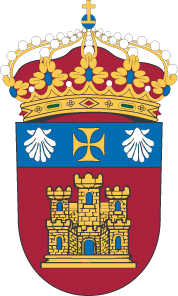Por favor, use este identificador para citar o enlazar este ítem: http://hdl.handle.net/10259/8089
Título
La llegada de los canales privados en el imaginario de los espectadores: receptores y nostalgia de aquella televisión (1990-2000)
Otro título
The arrival of private channels in the imaginary of spectators. Memories and nostalgia of that television
Publicado en
Estudios sobre el Mensaje Periodístico. 2020, V. 26, n. 2, p. 461-472
Editorial
Ediciones Complutense
Fecha de publicación
2020-04
ISSN
1134-1629
DOI
10.5209/esmp.67785
Abstract
El presente trabajo se interesa por la valoración que hacen los espectadores de la televisión de los años noventa. La calidad de la programación de entonces, el recuerdo de programas concretos, los valores difundidos, así como las prácticas culturales asociadas a su consumo son algunas de las cuestiones que se pretenden recuperar. El material de análisis utilizado serán los recuerdos de aquella etapa televisiva, que se han obtenido a través de un trabajo de campo propio, en el que se incluyen técnicas cuantitativas (la encuesta) y técnicas cualitativas (el grupo de discusión y la entrevista en profundidad). Los resultados señalan que en la memoria de ese período dominan las valoraciones positivas, aunque también se evidencian algunos claroscuros que los espectadores suelen rescatar con benevolencia. El trabajo recupera hitos televisivos y señala algunas de las contradicciones en la valoración de los contenidos, lo que pone de manifiesto como el efecto nostalgia tiende a dulcificar el recuerdo. The present research is interested in the appreciation made by television viewers of the nineties. The quality of the programming of that time, the memory of specific programs, the values they spread, as well as the cultural practices associated with their consumption are some of the issues that are intended to be recovered. The material of analysis material used will be the memories of that television stage, which have been obtained throwugh their own field work, which includes quantitative techniques (the survey) and qualitative techniques (the discussion group and the in-depth interview). The results indicate that positive ratings dominate the memory of that period, although there are also some shadows that spectators tend to rescue with benevolence. The work recovers television milestones and points out some of the contradictions in the appreciation of the contents, which shows how the nostalgia effect tends to soften the memory.
Palabras clave
Televisión
Años noventa
Recuerdos
Espectadores
Telebasura
Television
Nineties
Memories
Spectators
Pool
Depth interview
Discussion group
Materia
Comunicación
Communication
Versión del editor
Aparece en las colecciones











